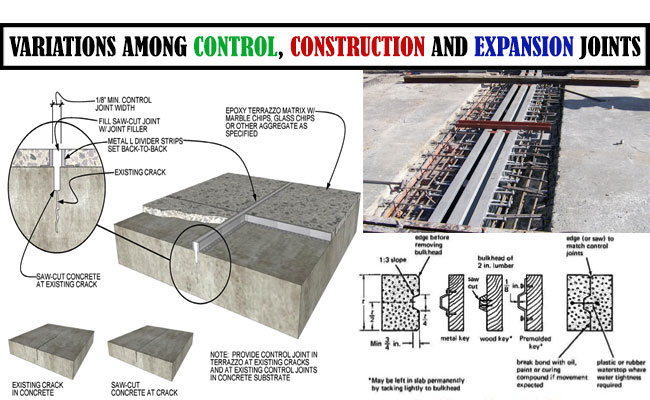Variations among Control, Construction and Expansion Joints

It is known that concrete has sound strength against compression but it has poor strength to combat tension. For this reason, reinforcement is provided to make tensile strength superior. Thus, the extra content of the concrete enhances the strength of the concrete significantly.
The following types of Joints are found in Construction:-
- Construction Joints
- Expansion Joints
Contraction/Control Joints
As soon as the concrete is poured and becomes solidified, the water contained in concrete gets to vaporize and forces the concrete to shrink and forms shrinkage cracks, particularly on longer slabs. The purpose of the contraction or control joints is to stop the further development of the crack to the whole area.
Advantages of control/construction Joints
Normally, control joint stands for the operation of building a saw cut groove and impair the slab where the crack may happen because of shrinkage (frequently at the centre of the slab).
A specific amount of concrete is poured in a single day and the remaining portion is left for the next day although it all functions as one complete structure for transmitting the load. The prime objective of the construction joints is to fortify the unit and transform it as one intact unit.
It signifies that the concrete pour is provided in certain shapes consciously. In order that the next fresh set of concrete will combine mutually with the older one and function as one intact unit. It is called as construction joint.
The construction joints are arranged according to IS 11817.
Expansion Joint
Expansion Joint is provided since the materials become extended with temperature.
When the adjoining structure is built up devoid of arranging expansion joint, then the modification in volume change will impact the adjoining structure and makes it disfigured. Consequently, the entire structured will be collapsed.
Advantages of Expansion Joints
While arranging expansion joints, there should be sufficient spaces for the structure to facilitate moving or expansion corresponding to their properties. These voids should be filled up with some acceptable materials like bitumen or fibreboard.
These are mostly found at Bridge decks and often in a long set of building units erected very narrowly.
The expansion joints are arranged with adherence to IS 3414.

